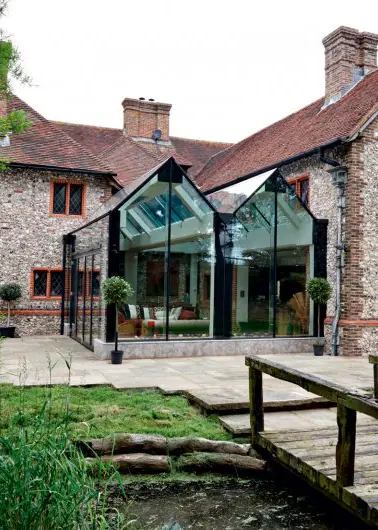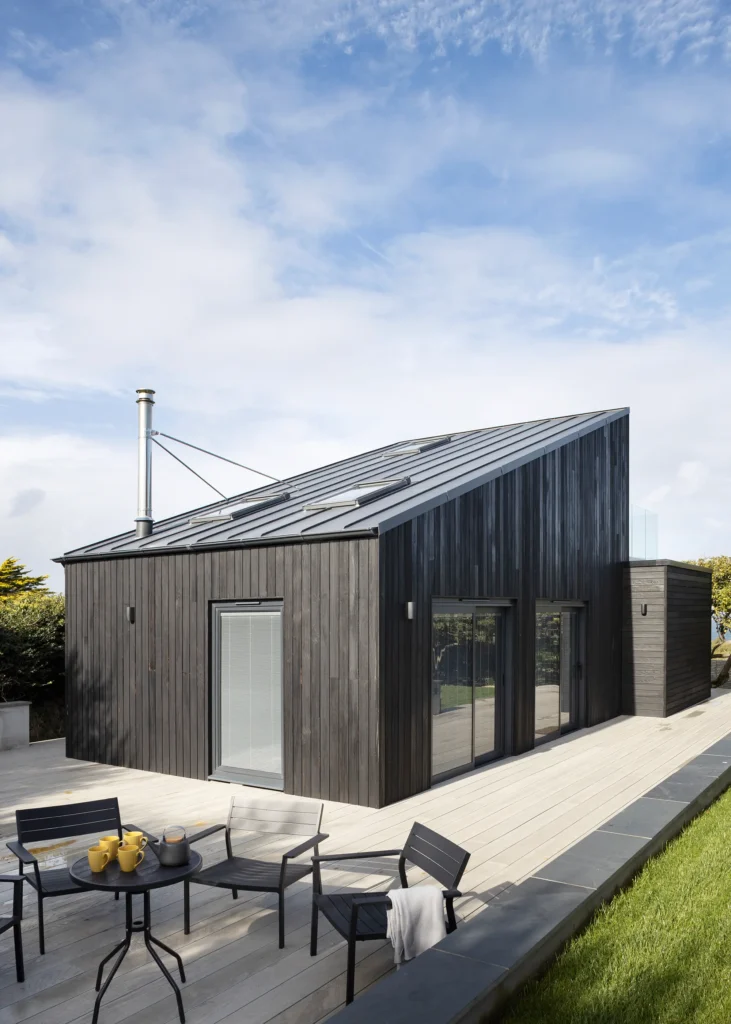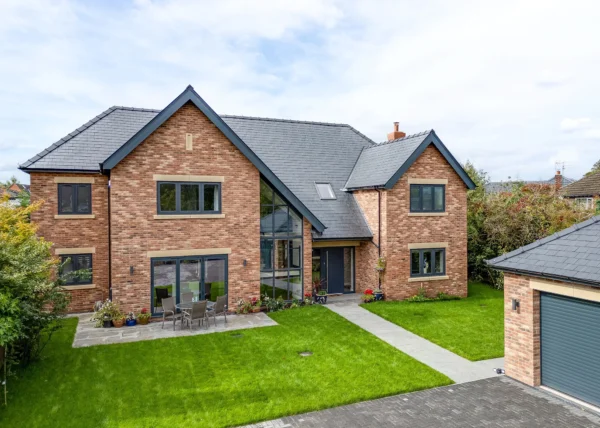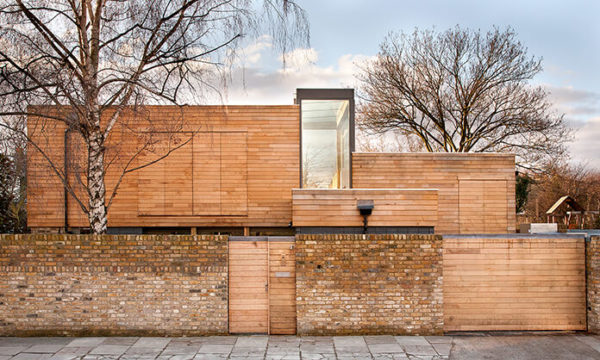Roofing Materials: How to Use Modern Roof Coverings in Your Project
Roofing materials have the ability completely transform and define the appearance of your home – so they need to be considered early on in your project.
The type of covering you choose will be part of the overall design strategy and, of course, it needs to be an effective shield against the elements. It may also need to reflect the environment around you. For example, your local planning authority could ask you to match the slate of neighbouring properties or stipulate a green roof so your house blends into an open rural landscape.
The roof pitch and profile will also come into play. “The golden rule in roof design is not to force a material to do something it can’t technically do,” says Steven Harris from CRSH Architects. “For instance, slate can’t be laid at a low pitch.”
Find here everything you need to know about the most popular roofing materials and how you can use them in your project to maximise their potential.
Metal Roofing Materials
Metal roofing is popular for its durability, lifespan and weathering. It is also relatively lightweight and has the flexibility to work with most roof shapes in a way that would be impossible with traditional tiles – metal can be installed onto a roof pitch as low as 3°, for example.
Metal roofing materials require fewer joints than tiles, is quick to install and low maintenance. It’s also easier to conceal details, such as gutters and pipes, to enhance the profile of the roof shape. However, be aware that metal can promote a flat aesthetic compared to the texture of traditional coverings.
Essential Information: How Much Do Roof Coverings Cost? Clay, Concrete, Slate & More

A copper finish across the roof and down the front of this design by Adrian James Architects lends a seamless finish to this innovative terraced property in Oxford. Photo: Fisher Studios
Zinc is available in various colours and popular in contemporary designs. Solar panels clip easily onto the seams and the sheets can be used to clad the walls and roof for a streamlined appearance. “The bare metal has a space age quality about it that gives a strong contemporary aesthetic,” adds Alan Dickson from Rural Design Architects.

Jim and Barbara Hewson self built this modern timber frame home in a section of their steading’s garden after struggling to find a new home elsewhere. The striking timber home features a unique corrugated Corten roof, which helps the build to remain in keeping with the surroundings while offering a durable covering. Photo: David Barbour
Camillin Denny Design completed a project in Cornwall, cladding the walls and roof in double standing seam copper. “The first question everyone asks about copper is when it will turn green,” says Mark Camillin from the company. “It could take anything from 40-60 years depending on the exposure, but the roof still looks fantastic in its raw, shiny state.”
Steel roofs in houses tend to be standing seam systems that are mechanically secured. “Steel will eventually rust, especially of it’s on a building anywhere near the coast, but one recent trend is for pre-weathered steel cladding, which comes in a glowing rusty orange colour. A very adept designer is essential to make the most of its striking appearance, but it is perfect for an eye-catching house design,” says architect Julian Owen.
CLOSER LOOK Roof pitch & stylesYour choice of roofing materials will have a huge impact on you home’s overall look and feel, but the roof pitch will also play a large role. If you’re looking to make a contemporary statement with your self build, why not opt for a unique roof shape, such as a mono pitch or double pitch? Double Pitch RoofThe use of glass by glazing supplier Tombe in the double-pitched roof of this steel-framed extension shows traditional architecture and contemporary materials can sit beautifully alongside each other. Mono Pitch RoofsSuzanne Mackey created this timber-clad annexe on her plot, which looks over the Cornish coast. The unique design features a zinc mono pitch roof, giving the property a striking silhouette.
Learn More: Roof Design: Roofing Materials, Construction and Planning |
Single-Ply Roofing Materials
A big plus of single-ply PVC roofing materials is that they’re easy to install. The materials are hot welded onto a flat roof deck to create one solid waterproof covering. The membrane is flexible, resistant to UV radiation and some options can last in excess of 40 years.
It’s also possible to create the appearance of a sharp, modern roof with pre-formed PVC coated steel edges, to which the membrane is welded. Single-ply coverings can also mimic the look of zinc, steel or copper roofs by using standing seams.
Installing a waterproof wall membrane and single-ply means that you can envelope the walls and roof of a house in a single material. The decorative cladding then acts as the rainscreen. “The effect looks very sharp; as though you’ve hewn the house out of a block of wood,” says Mark from Camillin Denny Design.

The overhanging wing-shaped roof dips and rises to reflect the undulating woodland around this new house in Hereford. Sarnafil‘s single-ply roofing membrane allows the necessary ventilation required in the complex structure
“My only reservation is the zone between the cladding and membrane filling up with leaves or nesting birds.” If you do decide to go down this route, be aware of the extra costs involved to fit the roof and the rainscreen finish.
Green Roofs
These coverings are great for blending a house into the landscape or to soften the appearance in an urban setting. They’re normally built on top of a single-ply surface and the waterproofing needs careful attention.
Be aware that a green roof is heavy, so you’ll need stronger structural roof members than usual to cope with the extra load.
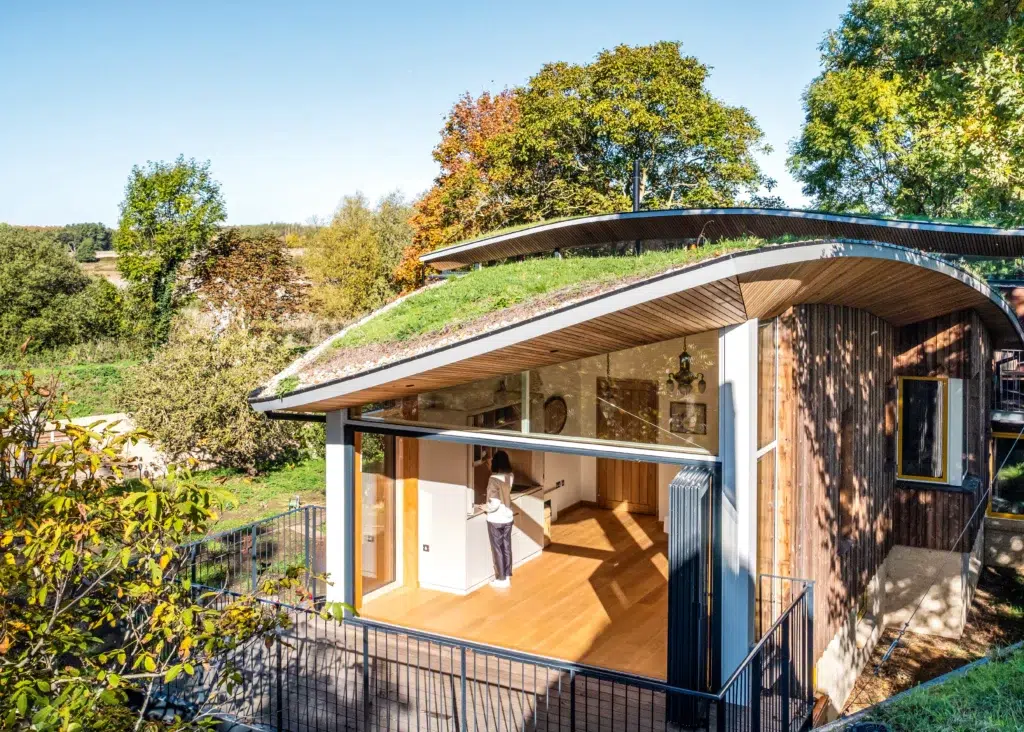
The curved roof of this eco home in Suffolk adds plenty of wow factor, topped with a green roof that is designed to blend in with its surroundings by looking like rolling meadows. The design was a collaboration between MAP Architecture and Jon Broome Architects
“There is enormous interest in creating green roofs,” says Tom Pike from Giles Pike Architects. “They are great for wildlife and can look impressive, but you need the right planting regime and time to maintain them.”
Considering a green roof on your self build or extension? Read our guide to Green Roofs: How To Get It Right
CLOSER LOOK Roof glazingArchitect Julian Owen shares his thoughts on incorporating glazing into your home’s roof design Glass can play an important role in the design of a property’s roof. The light from the sky is far brighter than that seen through a window, which is reflected from the landscape and features that surround a house. Even a small rooflight will provide high levels of illumination and make a space feel more pleasant. A good way to bring a touch of drama to your hallway, landing and stairwell is to open up the roof above them and add some large rooflights, or strips of glazing. These will work to flood the spaces below with natural light. The same principle applies to any rooms that are directly under a roof, which will always benefit from the addition of glazing overhead. Above: Arco2 Architecture took home the award for Best Eco Home at the 2019 Build It Awards. It features a wow-factor glazed roof, which sits atop a single-storey addition – helping the property to maximise its solar gain while making an effective design statement An opportunity that is sometimes missed is to put skylights into first floor bedrooms, which provide the added feature of allowing you to gaze at the stars as you lie in bed. Very large areas of glass are not generally a good idea, as they allow a lot of energy to escape and can cause overheating. However, if they are built in as part of the roof design they can be used to separate and break up the massing of the roof, also giving a house a more contemporary feel. Learn More: Rooflights and Overhead Glazing: Design Ideas and Advice |
Clay & Concrete Roofing Materials
Clay roof tiles are one of the most popular roofing materials. They’re comprised of natural materials so make a great addition to homes situated in the countryside, or for those opting for a heritage, period-style scheme. Because of this distinctive charm, they’re favoured by planners when working on heritage or listed projects. They’re available in a range of hues to suit your project, from deep blues to rich terracottas.
Learn More: Choosing Roof Tiles: Concrete or Clay?

Matt and Sarah Switzer chose handmade Brookhurst Wentworth clay roof tiles from Sahtas for their oak frame self build project. The charming, heritage feel of the clay tiles help tie the whole scheme together. Photo: Nikhilesh Haval
Clay is a heavy material, though, so you need to check that your roof’s structure and pitch can take its weight before specifying this roofing material – they should only be used on projects that have a roof pitch of at least 35°.
Concrete tiles are a versatile roofing option. They’re made by combining water, cement and sand, which is moulded into tiles under high pressure. You can choose from a selection of colours and profiles, such as curved or flat, and some products even replicate slate. It’s worth noting, though, that concrete units can weather poorly and lose their initial aesthetic appeal.
They’re also more prone to cracking than clay versions, attracting moisture, moss and lichen over time. Concrete roofing materials are heavier than other options, including clay, so check that your roof’s pitch and structure can take their weight before specifying.
Slate Roof Tiles
Slate roofing is a popular roofing material across a whole variety of projects as it’s versatile, high-quality and long lasting – if looked after properly, a slate roof can last over 100 years. These tiles are manufactured from natural stone, so they’re water and fireproof, making an extremely safe option that’ll keep your home’s structure protected for decades.

Levitate Architecture and Design Studio chose Cupa Pizarras’ CUPA 12 slate roof tiles for this home in a conservation area. The traditional feel of the slate helped with planning permission, with a sleek finish that sits well on the steep pitched roofs and overhanging eaves
Slates are available in a range of designs and colour ways, too. In the UK, Welsh varieties are popular for their distinct blue-ish hue, as well as Spanish and Brazilian traditional stone slates. Composite slates are also becoming more widely used, as they can create a slate-like look at a lower price. These are manufactured as uniform tiles, so won’t have the same unique quality of handmade versions, but they’re a great option for those on a tighter budget.
Looking for roof coverings and other building materials for your self build, renovation or extension? Browse Build It’s Product Directory full of high-quality options
This article was originally published in August 2018 and has been updated in November 2023. Additional content by Sander Tel.






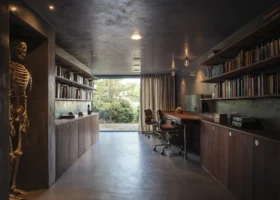
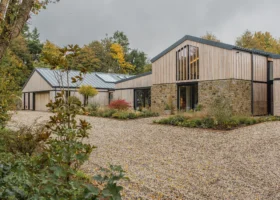
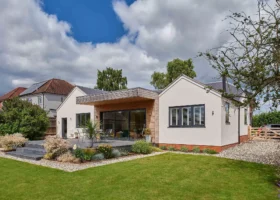
























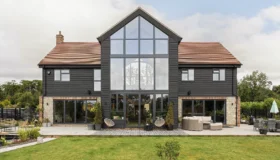



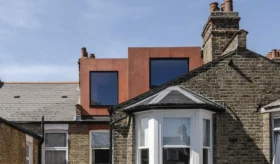
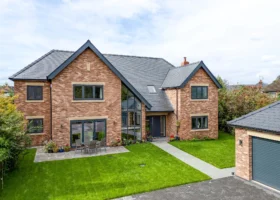

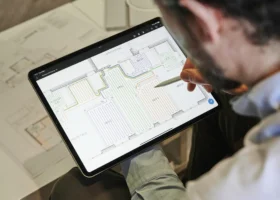

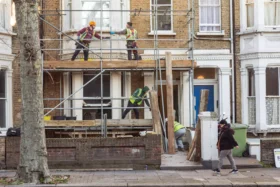


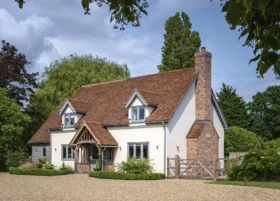


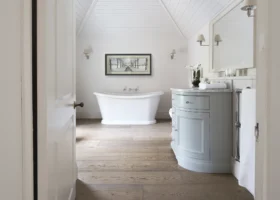





























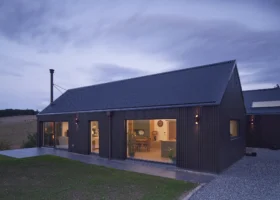















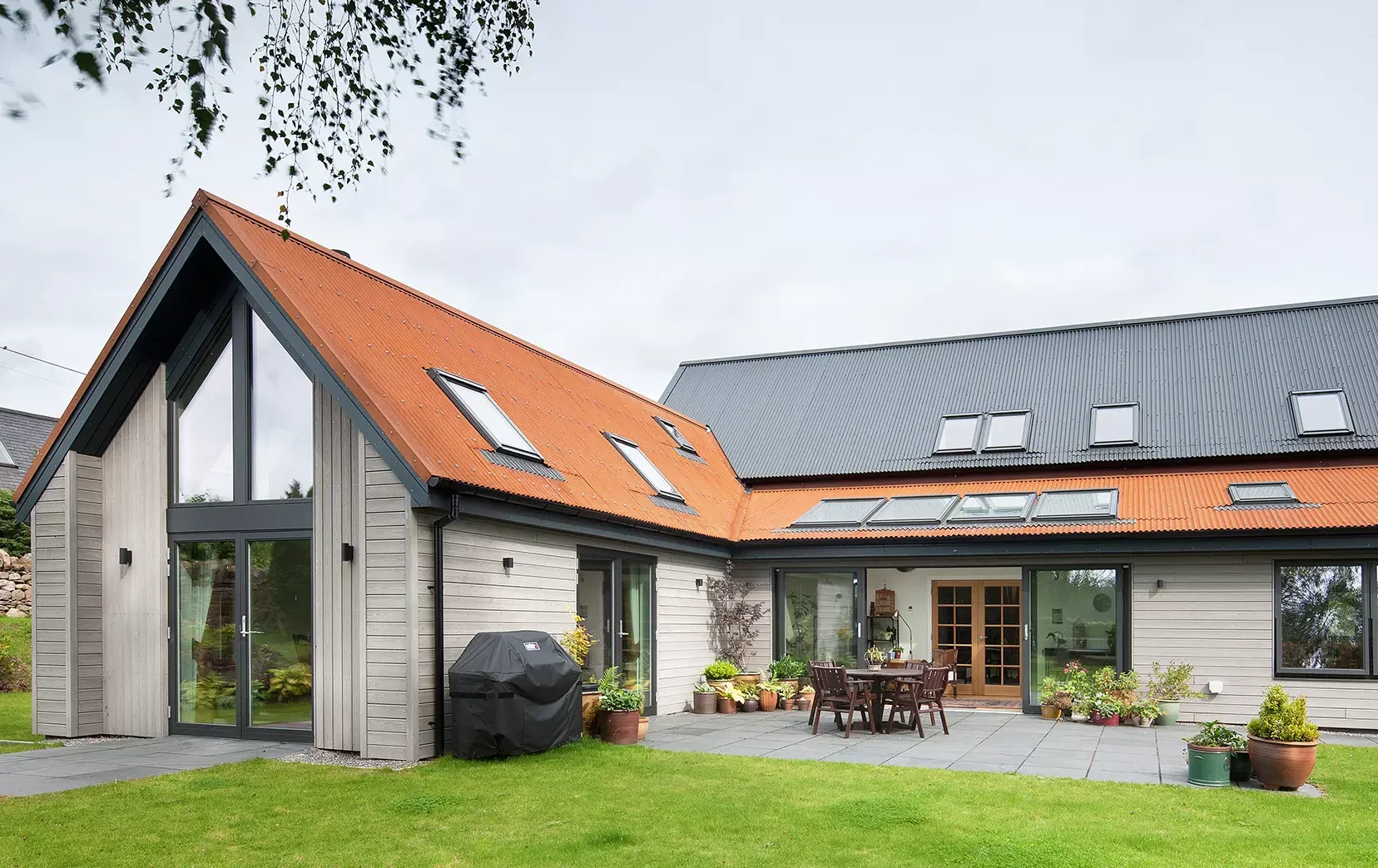
 Login/register to save Article for later
Login/register to save Article for later

